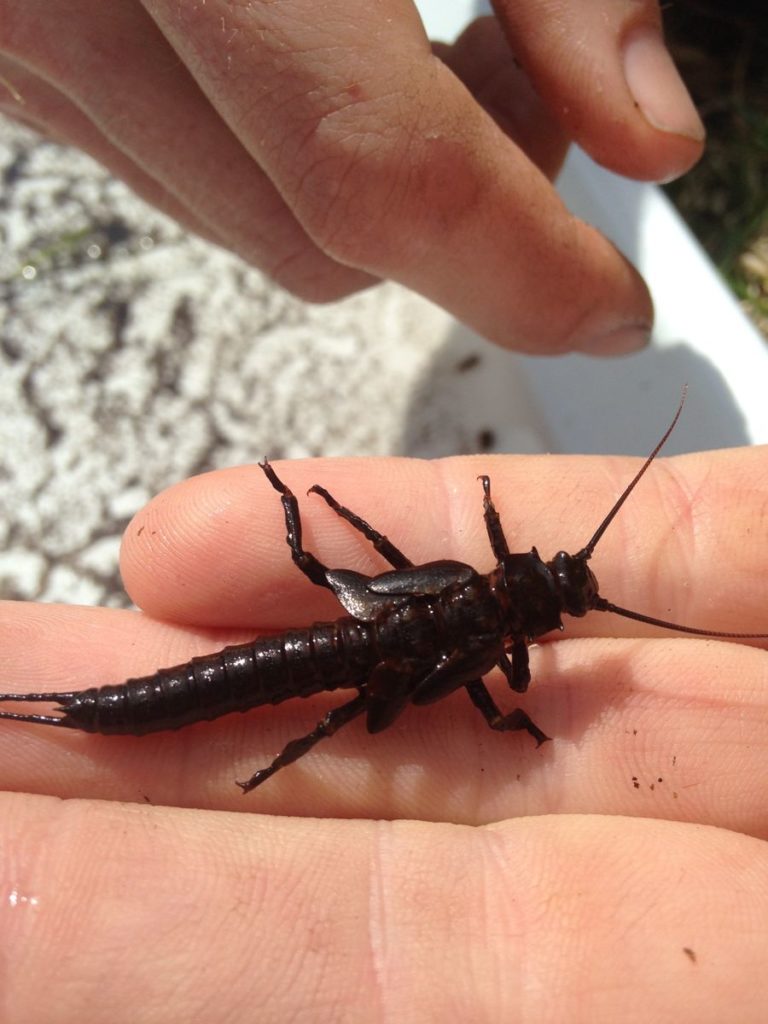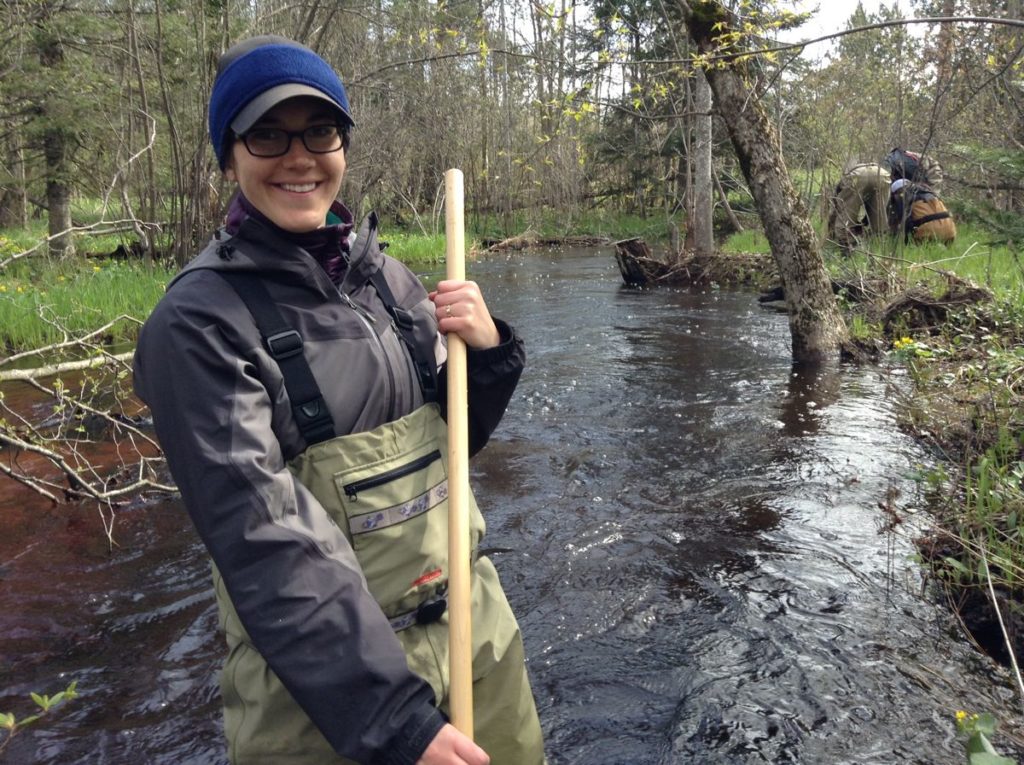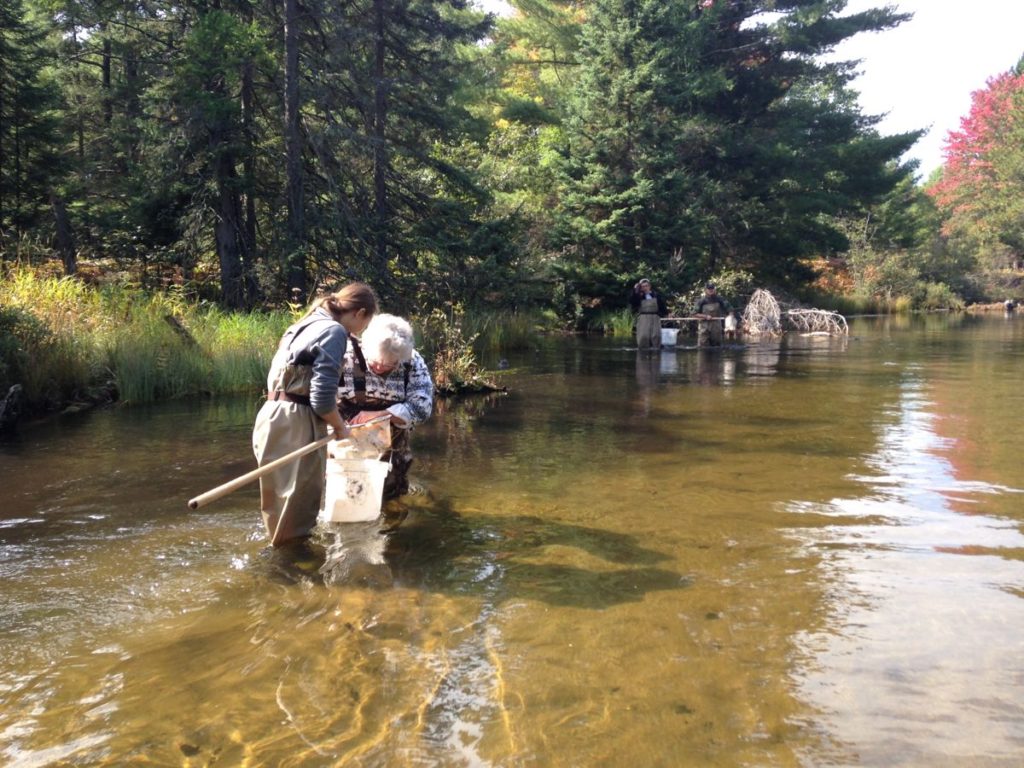When I was little, my neighborhood friends and I would sneak away from our houses just after lunch, traverse down the wooded bluffs and spend the afternoon exploring the nooks and crannies of the nearby Willow River. Barefooted and sunburned, we would wade up the stream in search of wildlife. In all of our rumpus and commotion we didn’t usually see much and as the sun’s angle neared the tree tops, we would let the current deliver us back to our starting point and rush to be home before dinner. It wasn’t until years later, during a stream ecology class in college that I realized how much life our bare feet and toes were coming into contact with below the water’s surface. The diversity and abundance of macro-invertebrate life is astonishing, as is the number that has crawled across my toes unknowingly.

When training new volunteers to join the ranks of our stream monitoring team, I often steal a page out of Dr. Paul Steen’s playbook and ask participants to recall their fondest water memories. The story above is one of mine and as I near the end of the story I will show the audience a large dragonfly nymph or maybe, a hellgrammite. The initial reaction from the audience is usually one of minor repulsion with several laughs from commiserating fellows. These are the critters that were crawling across my feet. With that the intrigue, whether positively or negatively associated, is fixed. Participants want to learn more and we dive into the work of identifying insects.
In 2013, my organization, the Au Sable Institute of Environmental Studies, was awarded a MiCorps start-up grant and began monitoring portions of the upper Manistee River. A year later we received a full project grant. We’ve enjoyed engaging new volunteers and audiences through the program and contributing to new knowledge about the health of portions of the upper Manistee River and its tributaries. What we couldn’t have predicted were the ways in which the MiCorps program and protocol would be applicable in our other outreach and educational programs.

Our K-12 environmental education program uses MiCorps training presentations to teach aquatic insect identification and diversity to middle school students. College students in our Aquatic Biology class participated in our MiCorps training to practice collection methods and learn about broad scope citizen science efforts. And just last year, one of our undergraduate research teams conducted a study of the slimy and mottled sculpin as potential indicator species of high water quality. Along with other parameters, they used the MiCorps collection protocol and SQI as comparative benchmarks.
One of the overarching goals of the MiCorps program is to educate the public on water quality issues and this education begins with developing awareness. As an avid fly-fisherman with a background in biology, aquatic insects have been on my radar for a long time. As an educator, I appreciate the convenience their abundance affords. No other animal is as readily accessible to study or observe as insects. Think about it, if I am teaching about dragonflies, I can take participants down to the pond and within minutes I can be holding a nymph in my hand. Try that with bears.
If in the end, participants leave our trainings or collection events with nothing more than a greater awareness of river ecosystems through studying insects, we will I suppose, have helped in some small way. It’s important to remember that even bite-sized pieces can have a large positive effect when multiplied. I am reminded of a friend who worked for the National Park Service for decades. His answer to individuals inquiring about large environmental problems was simple. “You can’t change the world, but you can change the world around you.” I hold this seemingly contradictive statement close to my heart. It’s too overwhelming to think about how to solve all of the world’s environmental problems. But we need reminding that we can experience very real, positive change in our home communities and work out from there. MiCorps is a wonderful example of this. It’s empowering to be a part of a program that collectively results in thousands more individuals becoming aware of the dynamics of stream life and taking ownership for the protection of their home watersheds.
We are fortunate as an organization to have multiple outlets and audiences, which can benefit from our MiCorps partnership. We look forward to continuing to inform people about the important function macroinvertebrates play in aquatic ecosystems and their instrumental role helping us monitor the waterways, which belong to us all.
Posted By: Paul Wiemerslage, Environmental Education Program Coordinator, Au Sable Institute of Environmental Studies
The Au Sable Institute of Environmental Studies is currently supported, in part, by a 2014 Aquatic Macroinvertebrate Survey grant under the MiCorps Volunteer Stream Monitoring Program (VSMP). They also received a 2013 VSMP Aquatic Macroinvertebrate Survey start-up grant to develop their monitoring program.






